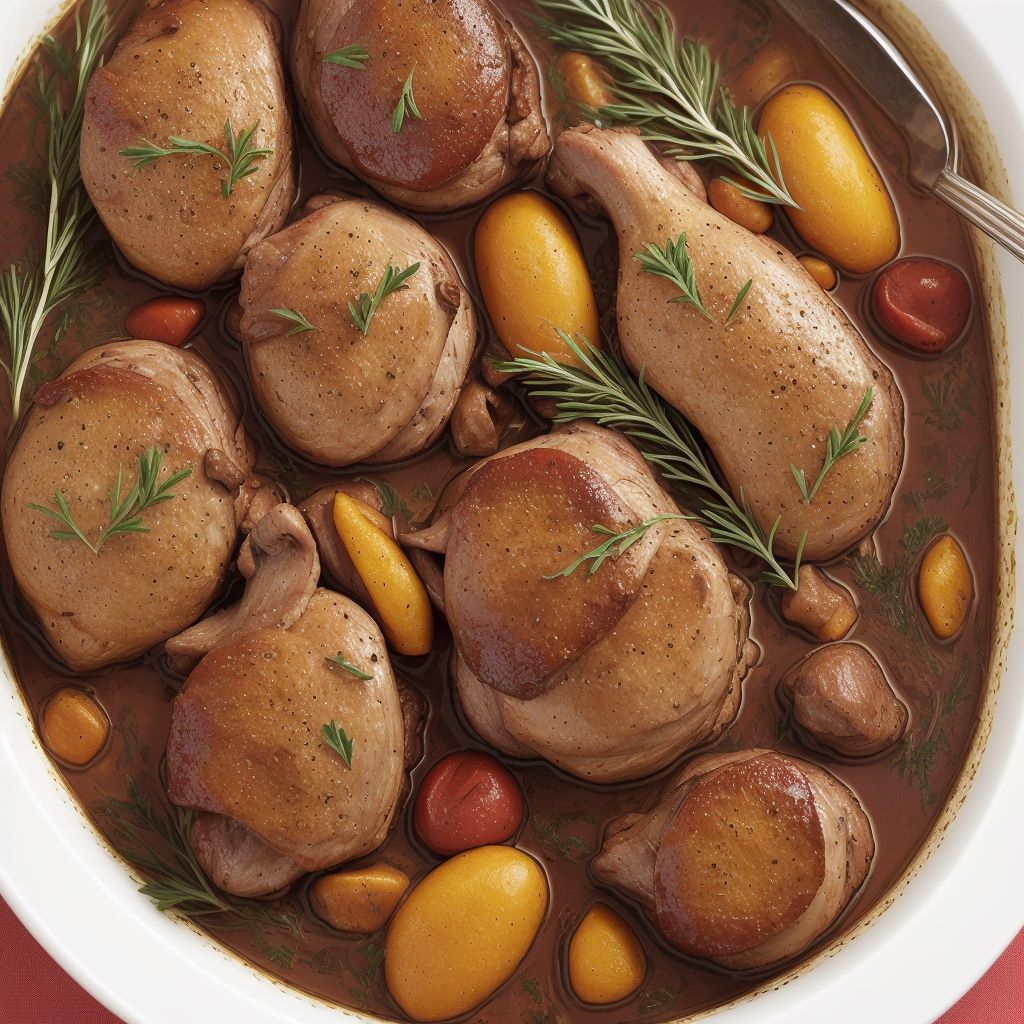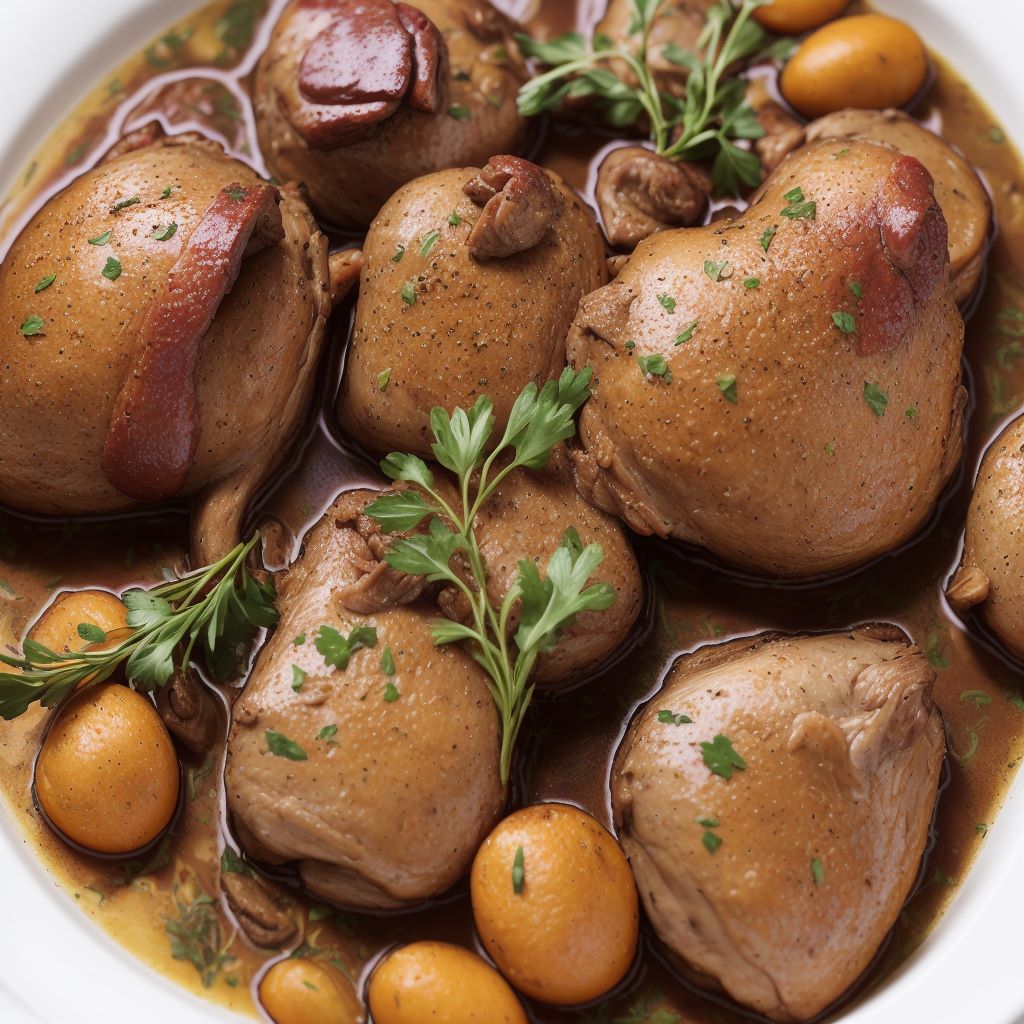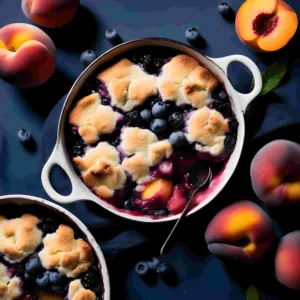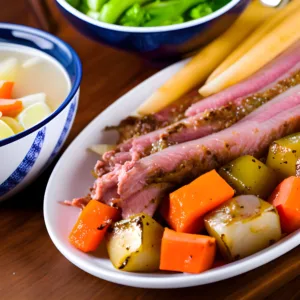This post may contain affiliate links which means I may receive a commission for purchases made through links.

Table of Contents
Mastering traditional Coq au Vin (Audio stream)
Introduction
Brief history and significance of Coq au Vin
Coq au Vin, which translates to “rooster with wine,” is a classic French dish that has a rich history dating back several centuries. It originated in rural France as a way to tenderize and utilize older, tougher roosters.
The dish’s roots can be traced to the Burgundy region, where it was initially prepared using rooster meat marinated in red wine. Over time, it gained popularity and spread throughout the country, becoming an emblem of French cuisine.
Coq au Vin holds cultural significance, representing the resourcefulness of French cooks who transformed humble ingredients into a flavorful and satisfying meal. It symbolizes the rustic charm and timeless traditions of French cooking.
Overview of the traditional cooking technique and ingredients
Traditional Coq au Vin involves slow-cooking chicken in red wine along with a medley of aromatic vegetables and herbs, resulting in a dish that is both hearty and deeply flavorful.
The recipe typically calls for chicken pieces, such as thighs or drumsticks, which are first marinated to infuse them with flavor and tenderness. Bacon lardons are used to add a smoky richness to the dish, while aromatic vegetables like onions, carrots, and garlic provide a savory base.
The star ingredient, red wine, not only tenderizes the chicken but also imparts a robust and complex taste. It interacts with the other ingredients during the cooking process to create a harmonious blend of flavors. Additional elements such as mushrooms, herbs like thyme and bay leaves, and sometimes even pearl onions are added to enhance the taste and texture of the dish.
Teaser of the mouthwatering flavors and aromas
Coq au Vin is a culinary masterpiece that tantalizes the senses with its enticing flavors and aromas. The slow simmering of chicken in wine, coupled with the aromatic blend of vegetables, creates a symphony of tastes that is both comforting and luxurious.
The rich, velvety sauce derived from the combination of wine, chicken juices, and vegetables envelops the tender meat, infusing it with deep flavors. The bacon lardons contribute a smoky and salty note, perfectly complementing the savory elements of the dish.
The fragrance of fresh herbs, such as thyme and bay leaves, wafts through the kitchen as Coq au Vin simmers, adding a delightful earthy aroma. The dish’s final presentation, with the chicken pieces nestled in a pool of rich sauce, is a visual treat that beckons you to savor each mouthful.
Unveiling the Essence: Key Ingredients and Their Roles
The star of the dish: Chicken
Choosing the right chicken parts
Coq au Vin traditionally uses chicken pieces with bones, such as thighs or drumsticks. These cuts add depth of flavor to the dish and withstand the long cooking process. Plan for about 3-4 pounds (1.4-1.8 kg) of chicken pieces to serve 4-6 people, adjusting the quantity based on your serving size requirements.
Tips for achieving tender and juicy chicken
To ensure tender and juicy chicken, it’s important to marinate the chicken pieces before cooking. The marinade helps to infuse flavor and break down the proteins, resulting in more succulent meat.
For the marinade, combine 1 cup (240 ml) of red wine, 2 cloves of minced garlic, 1 bay leaf, and a sprig of fresh thyme. Add the chicken pieces to the marinade, making sure they are fully coated. Marinate for at least 2 hours or overnight in the refrigerator.
The power of red wine
Selecting the appropriate wine variety
The choice of wine is crucial in creating an authentic Coq au Vin. Traditional recipes call for a dry, full-bodied red wine, preferably a Burgundy or a red wine from the Pinot Noir grape variety. You’ll need approximately 2 cups (480 ml) of red wine for the cooking process, plus a bit extra for the marinade.
The role of wine in flavor development, Red wine serves multiple purposes in Coq au Vin. It acts as a tenderizer, infusing the chicken with its flavors and ensuring moist, succulent meat. The wine also contributes to the rich, complex sauce that develops during the cooking process. As the wine simmers, it combines with the chicken juices and other ingredients, creating a luscious, deep-flavored sauce that coats the chicken.
The supporting cast
Bacon lardons and their smoky allure
Bacon lardons, small strips or cubes of bacon, add a smoky and salty element to Coq au Vin. They help enhance the overall flavor profile of the dish. You’ll need around 4 ounces (113 grams) of bacon, cut into small pieces or strips.
Aromatic vegetables and their aromatic contribution
Aromatic vegetables form the foundation of Coq au Vin, providing depth and complexity to the dish.
2 medium onions, finely chopped
2 medium carrots, sliced
3 cloves of garlic, minced
By understanding the importance of each ingredient and the appropriate quantities, you can ensure that your Coq au Vin captures the essence of this classic French dish.
Traditional Coq au Vin recipe , you will need the following kitchen materials:
Dutch oven or large, heavy-bottomed pot: A Dutch oven or a pot with a tight-fitting lid is ideal for slow-cooking the chicken and developing the flavors.
Chef’s knife: A sharp chef’s knife will be necessary for cutting the chicken, vegetables, and bacon.
Cutting board: Use a sturdy cutting board to safely chop and prep the ingredients.
Tongs: Tongs are helpful for flipping and turning the chicken pieces while searing and cooking.
Wooden spoon or spatula: A wooden spoon or spatula is useful for stirring and scraping the bottom of the pot to release any browned bits.
Measuring cups and spoons: Accurately measuring the ingredients ensures the perfect balance of flavors.
Kitchen twine: If you prefer to tie the herbs together to create a bouquet garni, kitchen twine will be handy.
Skimmer or slotted spoon: A skimmer or slotted spoon will help remove any excess fat or impurities that rise to the surface during cooking.
Serving platter: Choose a large serving platter or individual plates to present the Coq au Vin beautifully.
Optional: Wine opener and wine glasses: If you wish to enjoy a glass of wine alongside your Coq au Vin, a wine opener and wine glasses will come in handy.
Having these kitchen materials on hand will ensure a smooth and enjoyable cooking experience as you prepare the delectable Coq au Vin.
Step-by-Step Guide: Crafting the Perfect Coq au Vin
Marinating the chicken
The importance of marinating
Marinating the chicken is a crucial step in Coq au Vin, as it adds flavor, tenderness, and helps the meat absorb the aromatics from the marinade. The marinade infuses the chicken with the flavors of wine, garlic, and herbs, enhancing its overall taste profile.
Recommended marinating time and techniques
Ideally, marinate the chicken for at least 2 hours, or even overnight if time allows. This extended marinating time allows the flavors to penetrate the meat more deeply. To marinate the chicken, place the chicken pieces in a bowl or a resealable plastic bag. Pour the marinade over the chicken, making sure all pieces are coated. Seal the bag or cover the bowl, and refrigerate for the desired marinating duration.
Preparing the cooking base
Sautéing the bacon lardons
In the Dutch oven or pot, heat it over medium heat. Add the bacon lardons and cook them until they render their fat and turn crispy. This process adds a smoky and savory quality to the dish. Once cooked, use a slotted spoon or a skimmer to remove the bacon lardons from the pot, leaving the rendered fat behind. Set the crispy bacon aside for later use.
Incorporating aromatic vegetables
In the same pot with the rendered bacon fat, add the finely chopped onions, sliced carrots, and minced garlic. Sauté them until they become soft and translucent, releasing their delightful aromas. Stir the vegetables occasionally to prevent them from sticking to the pot. The aromatic vegetables form the foundation of the dish, contributing depth and complexity to the flavors.
Cooking the chicken and building flavors
Searing the chicken to perfection
Remove the chicken pieces from the marinade and pat them dry with paper towels. This step helps achieve a better sear. Heat the pot with the remaining bacon fat and vegetables over medium-high heat. Working in batches if necessary, place the chicken pieces skin-side down in the pot. Allow them to sear until golden brown, then flip them and sear the other side. This step adds a delicious caramelized crust to the chicken, sealing in the juices.
Deglazing the pan with wine
Once the chicken is seared, remove it from the pot temporarily. Pour the red wine into the pot, using a wooden spoon or spatula to scrape the browned bits from the bottom. This process, known as deglazing, incorporates those flavorful bits into the sauce.
Adding the cooking liquid and herbs
Return the seared chicken pieces to the pot. Add enough chicken broth or stock to partially submerge the chicken, creating a braising liquid. The liquid should come about two-thirds of the way up the chicken pieces. Bundle together a bouquet garni of fresh thyme sprigs and a bay leaf, and add it to the pot. This herb combination infuses the dish with fragrant flavors. Alternatively, you can tie the herbs with kitchen twine for easy removal later.
Simmering and slow-cooking
Achieving the ideal simmering temperature
Reduce the heat to low, bringing the liquid to a gentle simmer. Cover the pot with the lid, leaving a slight opening to allow steam to escape. The low and slow simmering ensures that the chicken becomes tender and allows the flavors to meld together harmoniously.
Patience is key: slow-cooking for flavor infusion
Let the Coq au Vin simmer for approximately 1.5 to 2 hours, or until the chicken is tender and the flavors have developed to their full potential. Throughout the cooking process, check the dish occasionally, skimming off any excess fat or impurities that rise to the surface. This step helps maintain the richness and clarity of the sauce.
By following these step-by-step instructions, you’ll master the art of crafting the perfect Coq au Vin, resulting in tender chicken, a flavorful sauce, and a dish that’s truly a culinary masterpiece.
The Perfect Accompaniments: Side Dishes and Serving Suggestions
Classic choices for side dishes
Buttered noodles or rice
Coq au Vin pairs wonderfully with buttered egg noodles or fluffy white rice. These simple and versatile side dishes provide a neutral base that allows the flavors of the Coq au Vin to shine. Cook the noodles or rice according to the package instructions, then toss them with a pat of butter for added richness and flavor. Serve them alongside the Coq au Vin, allowing your guests to spoon the flavorful sauce over their noodles or rice.
Crusty French bread or baguette
Another classic option is to serve Coq au Vin with slices of crusty French bread or a fresh baguette. The bread is perfect for sopping up the delectable sauce, adding an additional textural element to the meal.
Slice the bread or baguette into individual portions and place it in a basket or on a breadboard. The warm, crusty bread is a delightful accompaniment that completes the Coq au Vin experience.
Complementary vegetable options
Roasted root vegetables
Roasted root vegetables, such as carrots, parsnips, and potatoes, make a hearty and flavorful addition to Coq au Vin. The earthy sweetness of the roasted vegetables complements the rich flavors of the dish.
Preheat your oven to around 400°F (200°C). Peel and chop the root vegetables into bite-sized pieces. Toss them with olive oil, salt, pepper, and any desired herbs or spices. Spread them on a baking sheet and roast for about 30-40 minutes or until golden and tender.
Sautéed mushrooms or green beans
Sautéed mushrooms or green beans add a pop of vibrant color and freshness to the plate. They offer a contrasting texture and provide a balance to the rich and hearty Coq au Vin. For sautéed mushrooms, heat a skillet with butter or oil over medium-high heat. Add sliced mushrooms and cook until they become golden and tender. Season with salt, pepper, and herbs like thyme or rosemary.
To prepare sautéed green beans, blanch them in boiling water for a few minutes until they are bright green and slightly tender. Drain and then sauté them in a pan with butter or oil, garlic, and a sprinkle of salt and pepper until they are cooked to your desired doneness.
When serving Coq au Vin, consider combining one or two side dishes from the classic choices and complementary vegetables mentioned above. These accompaniments will enhance the overall dining experience, offering a variety of flavors and textures that complement the rich and savory Coq au Vin.
Remember to garnish the dish with fresh herbs, such as parsley or chives, for an added touch of freshness and visual appeal. Enjoy this exquisite French dish alongside your chosen side dishes and let the flavors of the Coq au Vin shine through.
Tips and Tricks for a Stellar Coq au Vin Experience
Enhancing the flavors with a bouquet garni
A bouquet garni is a bundle of fresh herbs tied together and used to infuse flavors into the Coq au Vin. It typically consists of thyme sprigs and a bay leaf, but you can customize it to your preference.
Consider adding additional herbs like rosemary, parsley, or sage to the bouquet garni for more complexity. This aromatic bundle releases its flavors gradually during the slow cooking process, enhancing the overall taste of the dish. Remember to remove the bouquet garni before serving to avoid any unpleasant texture or overpowering herb flavors.
Pairing Coq au Vin with the right wine
While red wine is an integral part of Coq au Vin’s cooking process, you can also consider serving a complementary wine alongside the dish. choose for a red wine that mirrors the flavors of the dish, such as a Burgundy or a Pinot Noir. These wines have similar characteristics to the wine used in the recipe and will harmonize well with the flavors of the Coq au Vin.
If you prefer white wine, choose a medium-bodied white with enough acidity to cut through the richness of the dish. A Chardonnay or a white Burgundy can work well in this case.
Creative variations and personal touches
Coq au Vin is a versatile dish that allows for personalization and creative variations. Consider experimenting with different herbs, spices, or additional ingredients to make it your own.
For added richness, you can incorporate a splash of cognac or brandy during the deglazing step. This imparts a delightful complexity to the sauce. If you prefer a lighter version, you can use chicken breasts instead of dark meat or reduce the amount of bacon.
Explore different serving presentations, such as serving Coq au Vin in individual cocottes or garnishing it with fresh herbs or a sprinkle of lemon zest. These tips and tricks will help you elevate your Coq au Vin experience, allowing you to tailor the dish to your preferences and enhance its flavors. Enjoy the process of preparing and savoring this timeless French classic.
Recap
Recap of the Coq au Vin journey
Throughout this blog article, we have delved into the rich and flavorful world of Coq au Vin, a traditional French dish with a history dating back centuries. We explored the significance of Coq au Vin and its traditional cooking technique, which involves slow-cooking chicken in red wine with aromatic ingredients.
From marinating the chicken to building flavors through sautéing bacon lardons and aromatic vegetables, we covered each step with detail and precision. We discussed the perfect accompaniments to serve alongside Coq au Vin, including classic choices like buttered noodles or rice and crusty French bread, as well as complementary vegetable options such as roasted root vegetables or sautéed mushrooms and green beans.
Tips and tricks were shared to enhance your Coq au Vin experience, from creating a flavorful bouquet garni to selecting the right wine pairing, reheating leftovers, and adding personal touches to the dish.
As we conclude this blog article, we hope that the detailed information, tips, and techniques provided have equipped you with the knowledge and confidence to create an exceptional Coq au Vin in your own kitchen. Remember to embrace your creativity and make the dish your own by adding personal touches and variations that suit your taste preferences.
Whether you’re preparing Coq au Vin for a special occasion or simply indulging in a delicious meal at home, we wish you a delightful culinary experience filled with mouthwatering flavors, memorable moments, and happy cooking adventures.
Congratulations!
You have successfully learnt how to make the traditional Coq au Vin. Now, it’s time to gather your ingredients, don your apron, and embark on your Coq au Vin journey.
Bon appétit!




